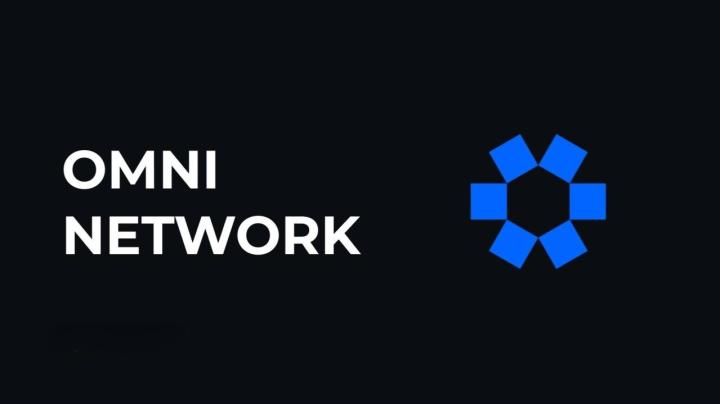In the cryptocurrency industry, which is full of myths about getting rich quickly, it is not uncommon for project parties to make a fortune and young founders to become crypto tycoons.
By Zen, PANews
The world's most profitable company per capita has changed hands, but it remains a crypto project. Recently, HyperliquidFR announced that its decentralized exchange, Hyperliquid, generates $102.4 million in annual revenue per employee, surpassing Tether, OnlyFans, Nvidia, and Apple to become the world's highest-earning company per capita. Previously, stablecoin issuer Tether held the top spot, with over $90 million in revenue per employee. According to DefiLlama data, Hyperliquid's team consists of only 11 core members, with an estimated annual revenue of approximately $1.127 billion.
In the cryptocurrency industry, rife with get-rich-quick stories, it's not uncommon for project owners to rave about their fortunes and young founders to become crypto millionaires. However, the example of Jeff Yan and his Hyperliquid, which has achieved the scale and efficiency it has today with a small team, remains rare. A glimpse into Jeff's family upbringing, educational background, and career journey reveals that Hyperliquid's emergence and development path may not be accidental.
From a top "test-taker" to the founder of a decentralized exchange
Jeff Yan was born and raised in Palo Alto, California, the son of Chinese immigrants. As a teenager, Jeff began to demonstrate a strong talent for mathematics and science. In 2012, Jeff won the silver medal at the 43rd International Physics Olympiad (IPhO), having only been dedicated to physics research for about a year. In 2013, Jeff competed again in the 44th IPhO, winning gold and placing 24th. This marked the first time a graduate from his alma mater, Palo Alto High School, had achieved such a remarkable feat in this prestigious competition.

As a top-notch problem solver, Jeff successfully enrolled at Harvard University, majoring in mathematics and computer science. After graduation, Jeff joined high-frequency trading giant Hudson River Trading (HRT) as a quantitative trader. At HRT, he delved deeply into the US stock market, designed a low-latency system capable of executing thousands of trades per second, and gained a deep understanding of how market makers provide liquidity and the impact of varying trade flows on market efficiency.
In 2018, Jeff was drawn to the burgeoning cryptocurrency industry. He attempted to build an Ethereum Layer 2 prediction market platform, but failed due to regulatory uncertainty, limited adoption, and a lack of users. After learning from his experience, he turned his attention back to trading. Combining his work experience, he founded Chameleon Trading, a cryptocurrency market making company, in early 2020. During the bull market, Chameleon Trading quickly grew to become one of the largest market makers on centralized exchanges.
It wasn't until November 2022, when the FTX exchange's collapse shocked the world. "People realized that cryptocurrency was a fun game until something bad happened," Jeff recalls. After witnessing billions of dollars evaporate overnight due to users' trust in centralized platforms, many saw it as a sign to abandon the market and began to stay away from cryptocurrencies, which subsequently fell into a long slump. However, Jeff saw both challenges and opportunities.
Jeff realized that ordinary users would prioritize self-custody and prefer decentralized crypto asset trading. At the same time, they recognized the market lacked a trading platform that balanced decentralization with a superior user experience. This insight informed the core concept of Hyperliquid: to create a high-performance, fully on-chain perpetual swap exchange, allowing users to maintain control of their assets while enjoying a trading experience similar to that of centralized exchanges. Hyperliquid can theoretically process 200,000 transactions per second and supports multiple markets and high leverage.
Bootstrapping and streamlining: Jeff Yan's small team strategy
In the traditional startup story, after demonstrating unicorn potential, a startup team typically begins scrambling to secure funding and resources from venture capital firms and aggressively expand their team. This scenario is rare, even in the decentralized Web3 and cryptocurrency industries. Jeff and Hyperliquid are that exception.
Jeff emphasized that Hyperliquid's development was entirely self-funded, never accepting venture capital. He stated that he wasn't in business for wealth, believing that "money is just a number"; creating valuable, meaningful products is more important. Jeff believes that true progress lies in allowing users to experience tangible value, rather than continually raising venture capital in exchange for milestone publicity.
Therefore, Hyperliquid has embraced the philosophy of "community-led ownership" since its inception: tokens are distributed directly to users through user transactions, never allowing venture capitalists to control the network. As Jeff puts it, "allowing venture capitalists to hold significant stakes in a decentralized network would be a 'scarring effect on the network.'" His vision is a financial system "built by and for the users."
Hyperliquid maintains a "small but effective" strategy when it comes to team building. Currently, the core team consists of only 11 people, approximately half of whom are engineers, with the remainder responsible for product and operations. The team maintains a flat, efficient work environment. Jeff gives the team full autonomy in management, but remains actively involved in technical matters to stay abreast of all developments. Hyperliquid adheres to an asset-light approach and does not have a separate marketing department or traditional business development team.
In the early days of the business, Jeff and his team worked closely together, overcoming the challenges of a startup. This was thanks to his unwavering commitment to excellence in talent recruitment. He admits that he is extremely selective with every partner he hires, believing that "hiring the wrong person is worse than hiring no one at all." While he is willing to expand the team as the business grows, he insists on hiring only those who are "extremely smart, motivated, and truly passionate about this business."
Jeff once said in an interview: "We are not like the common teams in the cryptocurrency field. They have grand long-term visions, raise a lot of money, and develop multi-year roadmaps. I think this approach is cool, but it is not our strong point." Jeff claimed that the team is more focused on the actions that need to be taken next and believes that they are moving in the right direction, but will not develop a plan with hundreds of steps.
How did Hyperliquid rise to prominence?
Hyperliquid's technical architecture is fundamentally different from traditional DEXs. It's a decentralized perpetual contract exchange with full on-chain matching, rather than an AMM model like Uniswap. The Hyperliquid team has purpose-built a high-performance Layer-1 blockchain (the same name as "Hyperliquid"), enabling near-CEX-level trading throughput. This foundation enables full order book matching—limit orders, trades, cancellations, and liquidations all occur transparently on-chain and within a single block. Analysts predict that by June 2025, Hyperliquid will have captured approximately 78% of the on-chain derivatives market, with daily trading volume exceeding $5.5 billion.
Hyperliquid's matching engine also incorporates a special rule: the platform deliberately deprioritizes high-frequency "taker" market orders to give market makers an opportunity to update their quotes. This encourages market makers to quote tighter bid-ask spreads, thereby providing traders with better pricing. Under this price-time-priority and strategically smooth matching mechanism, all trades are executed on-chain, with the entire process fully transparent to users. These sophisticated matching rules and decentralized execution have earned them favor among professional traders.

Regarding liquidity, Hyperliquid has established a protocol-level HLP: a hybrid pool that combines market making and clearing capabilities. The HLP vault is owned by the protocol, and any user can deposit funds to participate in market making. When there are no matches in the order book, HLP acts as the counterparty to complete the trade. Jeff emphasized that Hyperliquid does not have any private agreements or funding arrangements with any market makers other than HLP. In other words, Hyperliquid does not have designated internal pools or market makers like some centralized exchanges; the only liquidity provider comes from the open HLP, which is designed to ensure fairness and transparency.
Hyperliquid's decentralized design is also reflected in its token economics. Its native HYPE token serves as a network governance tool, reduces transaction fees through staking, and features a buyback mechanism to capture value. When Hyperliquid launched the HYPE token in November 2024, it airdropped 31% of the tokens to approximately 94,000 users, marking one of the largest user-centric distributions in recent years.
Since its launch, Hyperliquid has experienced explosive growth. Leveraging its fully transparent on-chain platform, Hyperliquid has attracted numerous crypto whale and leading institutions. All trading, position, and margin data are publicly available. This unprecedented transparency not only builds a strong foundation of trust but also becomes its most prominent drawcard. The frequent influx of renowned trading institutions and capital giants not only generates significant liquidity but also implicitly bolsters the platform's credibility, contributing to its rapid rise in the derivatives market.
Upon its 2023 launch, without extensive marketing or influencer outreach, the platform's daily trading volume exceeded $1 billion in less than 100 days. A DWF research article reported that Hyperliquid's crypto perpetual contract trading volume in July 2025 reached approximately $320 billion, with protocol revenue reaching $86.6 million, both record highs. On August 15th, Hyperliquid announced on the X platform that it had reached a new milestone, with a 24-hour trading volume of $29 billion and transaction fees of $7.7 million.
According to a new report on Hyperliquid released by data provider RedStone, in just one year, Hyperliquid has captured over 80% of the decentralized perpetual swap market, rivaling some of the largest centralized exchanges. These astonishing figures have earned Hyperliquid the community acclaim as the "Binance on Chain." All of this was achieved with a team of just over ten people and zero marketing budget.
Disclaimer: As a blockchain information platform, the articles published on this site solely reflect the personal views of the authors and guests and do not represent the position of Web3Caff. The information within these articles is for reference only and does not constitute any investment advice or offer. Please comply with the relevant laws and regulations of your country or region.
Welcome to join the Web3Caff official community : X (Twitter) account | Web3Caff Research X (Twitter) account | WeChat reader group | WeChat public account






